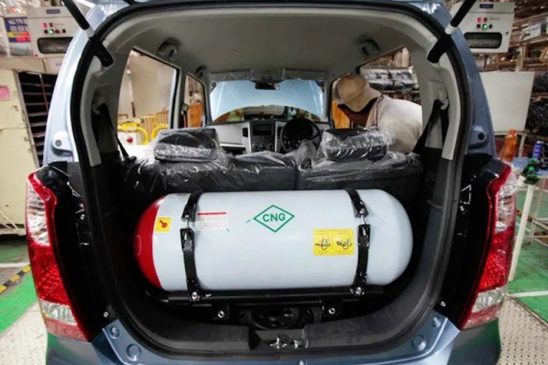Prices of natural gas, which is used to generate electricity, make fertiliser and is converted into CNG to run automobiles, is likely to rise to record levels at the rate review scheduled this week.
New Delhi: Prices of natural gas, which is used to generate electricity, make fertiliser and is converted into CNG to run automobiles, is likely to rise to record levels at the rate review scheduled this week, sources said. The government-dictated price for natural gas produced in the country is to be revised on October 1.
Read More:-Zomato Down in Several Cities: Customers Unable to Order Food Online. Here’s What They Say
After factoring in the spike in energy prices witnessed in recent months, the rate paid for gas produced from old fields such as of state-owned Oil and Natural Gas Corporation (ONGC) is likely to rise to USD 9 per million British thermal units from current $6.1.
Simultaneously, difficult fields like the ones in Reliance Industries Ltd and its partner bp plc operated D6 block in KG basin, are likely to get around $12 mmBtu compared to the current rate of USD 9.92, two sources aware of the matter said.
These are the highest rates for administered/regulated fields (like ONGC’s Bassein field off the Mumbai coast) and free-market areas (such as the KG basin).
Also, this will be the third increase in rates since April 2019, and comes on the back of firming benchmark international prices.
Read More: PM KISAN 12th Installment Likely by This Month: Know How to Check Beneficiary Status Online
The government sets the price of gas every six months — on April 1 and October 1 — each year based on rates prevalent in gas surplus nations such as the US, Canada and Russia in one year with a lag of one quarter.
So, the price for October 1 to March 31, is based on the average price from July 2021 to June 2022. This is the period when global rates shot through the roof.
“The government has set up a committee to review the formula for pricing of domestically produced natural gas. It can for all practical reasons not revise prices on October 1, citing the pendency of issues before the committee,” a source said.
The committee, under former planning commission member Kirit S Parikh, has been asked to suggest a “fair price to the end-consumer”, according to an order of the oil ministry.
The panel, which includes representatives of the gas producers association as also producers ONGC and OIL, was asked to submit its report by the month-end but the same is likely to be delayed, sources said.
It also has a member from private city gas operators, state gas utility GAIL, a representative of Indian Oil Corporation (IOC) and a member from the fertiliser ministry, the order said.
Read More: Attention ICICI Bank Credit Card Users: You Will Pay 1% Fee For Paying Rent From Oct 20
The government had in 2014 used prices in gas surplus countries to arrive at a formula for locally produced gas.
The rates according to this formula were subdued and at times lower than the cost of production till March 2022 but rose sharply thereafter, reflecting the surge in global rates in the aftermath of Russia’s invasion of Ukraine.
Read More:-Small Savings Scheme: Will Govt Raise Interest Rates For October-December 2022?
The price of gas from old fields, which are predominantly of state-owned producers like ONGC and Oil India Ltd, was more than doubled to USD 6.1 per mmBtu from April 1, and is now expected to cross USD 9 per mmBtu next month.
Similarly, the rates paid for gas from difficult fields such as deepsea KG-D6 of Reliance, went up to USD 9.92 per mmBtu from April 1 against USD 6.13 per mmBtu. They are expected to rise to USD 12 per mmBtu next month.
Read More: South Indian Bank hikes interest rates on fixed deposit of 1 to 10 years
Gas is an input for making fertiliser as well as power. It is also converted into CNG and piped to household kitchens and a rise in its prices fuels inflation.
The panel has been asked to recommend a fair price to end-consumers and also suggest a “market-oriented, transparent and reliable pricing regime for India’s long-term vision for ensuring a gas-based economy,” the order said.
The government wants to more than double the share of natural gas in the primary energy basket to 15 per cent by 2030 from the current 6.7 per cent.
Read More: Post Office Savings Account: DoP changes withdrawal rule; know details
The volume-weighted average of the price prevalent in a 12-month period in US-based Henry Hub, Canada-based Alberta gas, UK-based NBP and Russia gas are used to fix prices for administered fields of ONGC and Oil India Ltd.
For difficult fields like discoveries in deepwater, ultra-deepwater and high pressure-high temperature areas, a slightly modified formula is used by incorporating the price of LNG, which too had shot through the roof in 2021.
Read More:-Chandigarh airport to be named after Bhagat Singh: PM Modi announces during Mann Ki Baat address
Reliance-bp operated KG fields are classified as difficult fields. The sources said the increase in gas price is likely to result in a rise in CNG and piped cooking gas rates in cities, such as Delhi and Mumbai.
It will also lead to a rise in the cost of generating electricity but consumers may not feel any major pinch as the share of power produced from gas is very low.
Similarly, the cost of producing fertiliser will also go up but as the government subsidises the crop nutrient, an increase in rates is unlikely.





































